 |
| Please click photos for a larger version. |
It has been a while since I last posted a trip report. Life has been busy with little time for camping. We finally got our act together to take a short trip- kind of a shakedown for a longer trip we are planning for the end of August. We decided to visit Taliesin- the home and studio of Frank Lloyd Wright, located near Spring Green, Wisconsin.
http://www.taliesinpreservation.org/
As usual, we took the back roads to our destination. We followed the Mississippi River on the Wisconsin side to LaCrosse before heading east to our destination.
 |
| View of the Mississippi River from Buena Vista Park above Alma, Wisconsin |
Frank Lloyd Wright was an idol of mine as I started architecture school in the late 1960s. He is famous around the world for his designs and is considered by many to be the greatest American architect of all time. I have always wanted to visit Taliesin but never got around to it. Now was the time.
Spring Green is located in a part of southwestern Wisconsin known as the Driftless Area, characterized by deeply carved river valleys, forested limestone bluffs and picturesque farms. The beautiful landscape is a result of this area having uniquely escaped glaciation for the past million or so years.
Driftless Area
Wright's mother's family immigrated from Wales and settled near
Spring Green in the 1800's- eventually accumulating a large estate of thousands of acres
inherited by Wright. His parents met there and married in 1866. Wright
was born in 1867 and died in 1959.
Wright grew up in the midst of this beauty and always dreamed of building his home on the family's land there.
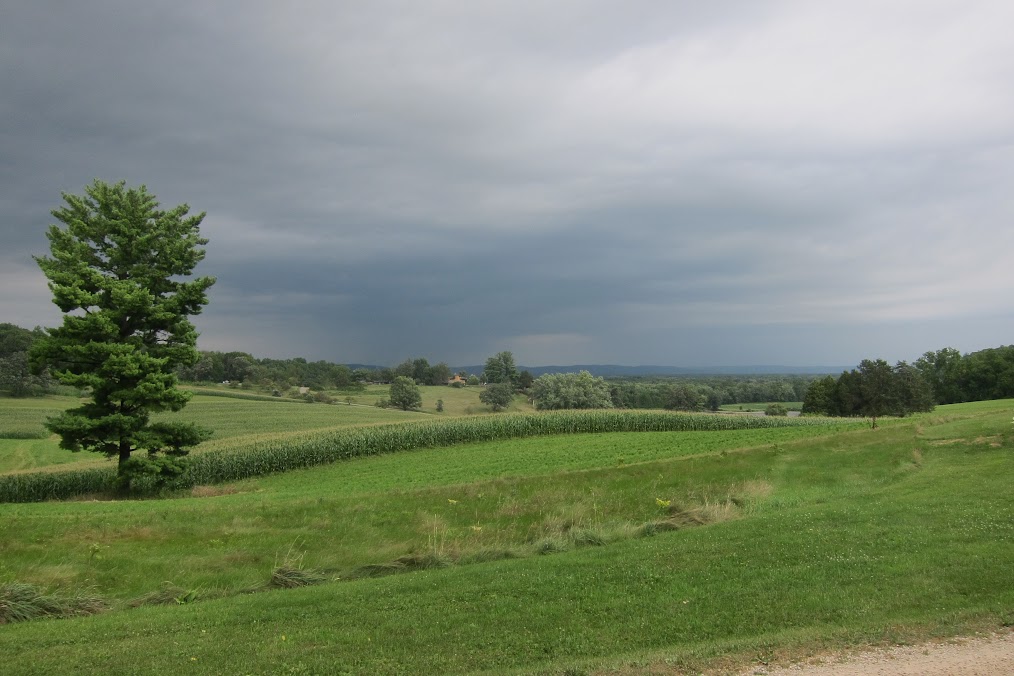 |
| View from Taliesin | |
|
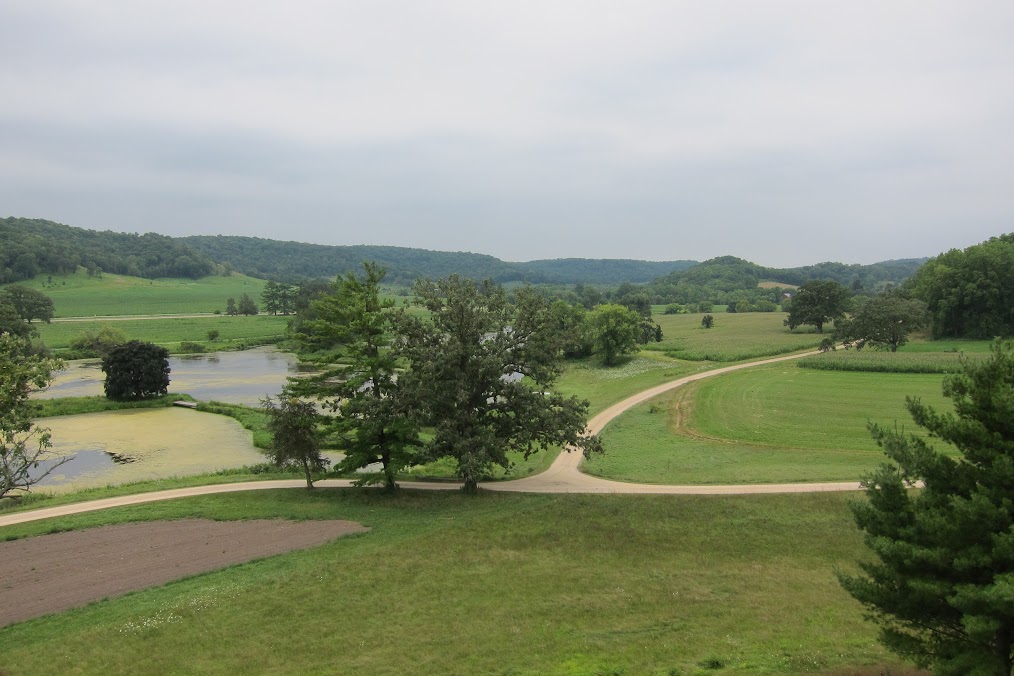 |
| Another view from Taliesin |
Taliesin was first constructed in 1911 and burned in 1914 and 1925. Wright rebuilt each time and continued to tinker with the design for the rest of his life. Over time much of the original land was sold by Wright. In addition to his home and studio, the remaining estate, which now consists of 600 acres, includes several other Wright designed buildings. We took a tour of the full estate on a cloudy day with intermittent rain, led by an engaging and knowledgeable docent. The tour lasted almost 5 hours and took us through several of the more notable buildings with pleasant walks across the estate grounds between them. Photos were not allowed in the interiors.
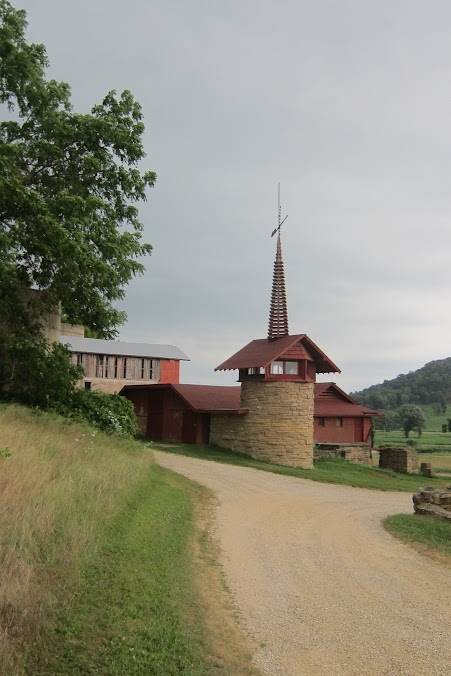 |
| Barn and Silo |
 |
| Taliesin Estate |
Wright was known for integrating buildings with nature, with open plan interior spaces oriented to the natural world outside. Materials were largely wood, plaster and stone, recalling the woods and limestone of the countryside. Taliesin exemplifies his philosophy, stretching low across the land and hugging the hillside with views from every room of the lovely landscape surrounding the house.
 |
| Romeo and Juliet Tower |
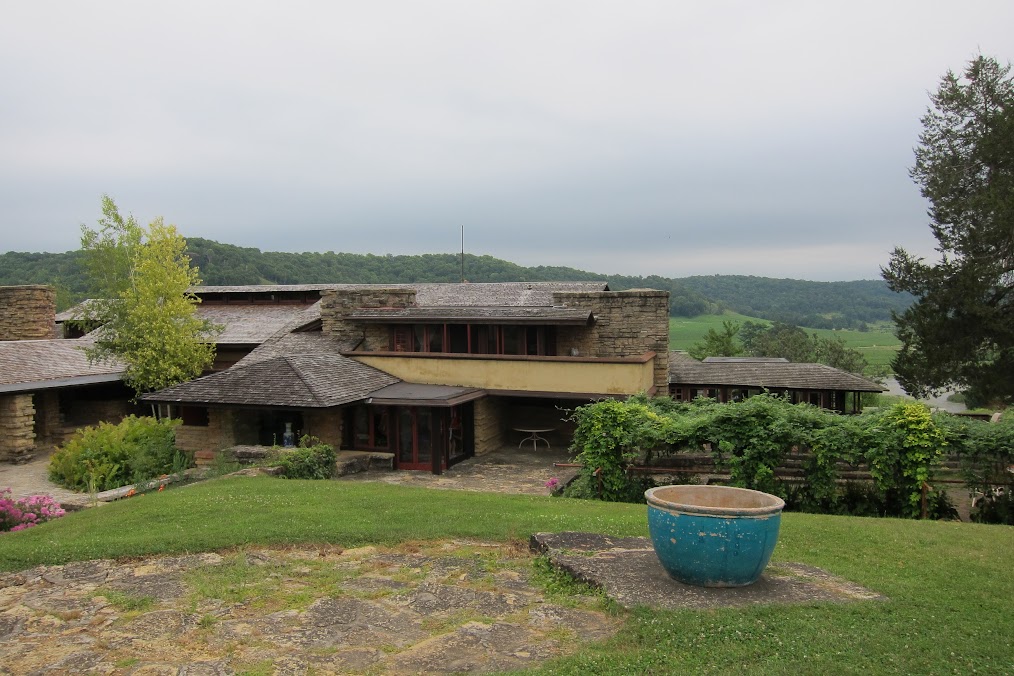 |
| Garden side of Taliesin |
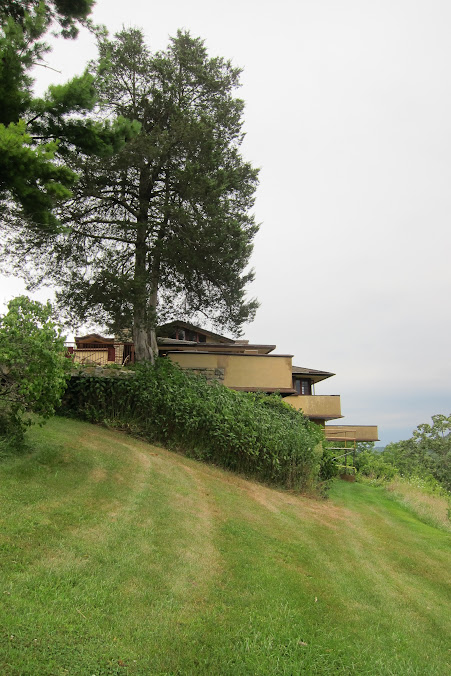 |
| The hillside |
We marvelled at the serene spaces and the interesting details. Rooms flowed together and to the outside terraces. Windows and clerestories, together with ceilings that varied from head-height to soaring vaults, altered the experience from constraining to openness, providing a sense of movement through the spaces. Furniture was designed along with the house and integrated into the overall composition. There was no paint used- materials reflected their intrinsic character. We were left with a new appreciation of Wright's genius.
In addition to his architecture, Wright was an accomplished collector
and dealer of Japenese art. The house and grounds are filled with art and
sculpture from his collection.
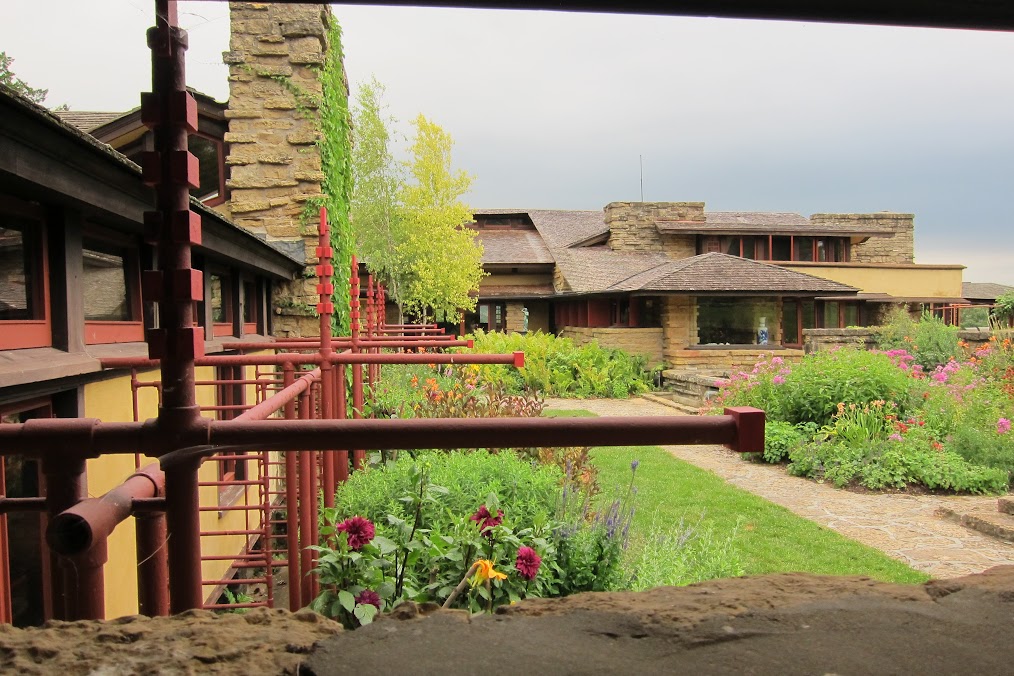 |
| Garden view |
 |
| Another garden view |
 |
| Guardian Lion Figure |
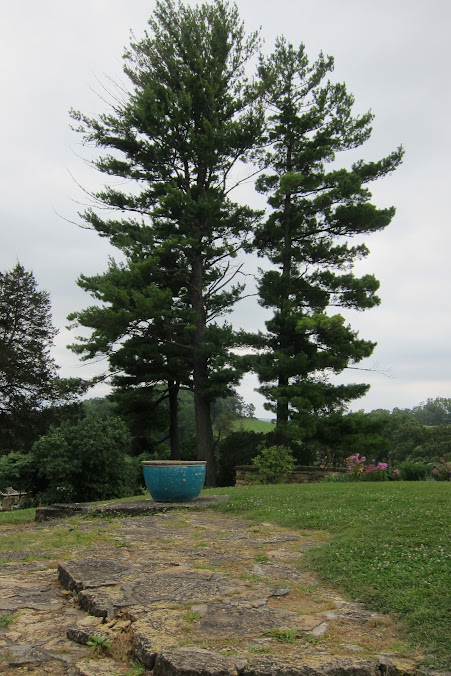 |
| Landscape view |
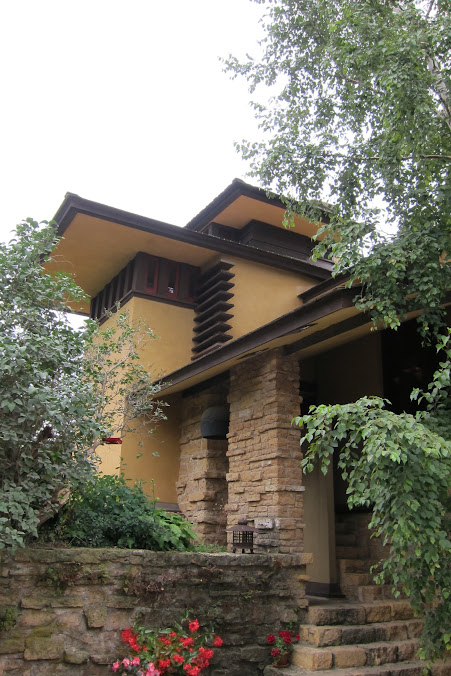 |
| Entrance |
 |
| Another hillside view |
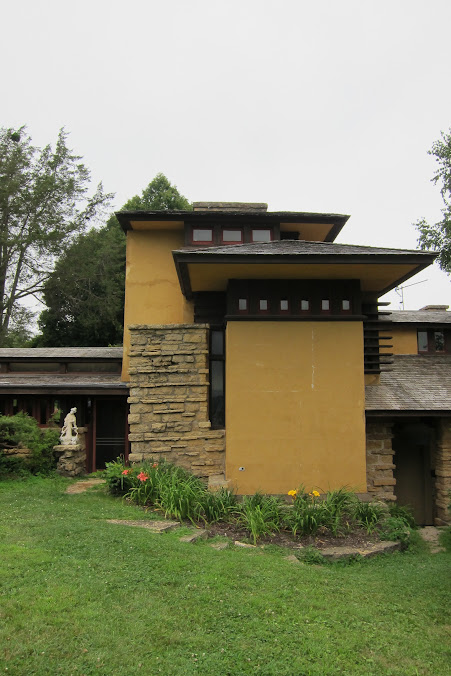 |
| Natural materials |
After the tour we camped at Tower Hill State Park, a small campground with 11 tent sites near Taliesin. Tower Hill is named for the historic Helena Shot Tower located in the park. Lead shot was manufactured there from 1832 to 1860. A shaft 120 feet tall and an intersecting 90 foot tunnel were carved in solid rock by hand without the aid of surveying instruments. A wood-framed tower was built on top of the shaft to get sufficient height. It is an interesting story- more information here:
https://en.wikipedia.org/wiki/Tower_Hill_State_Park
We enjoyed several short hikes while there- to the top of the shot tower, to the tunnel at the bottom of the cliff, and to an historic gazebo in the woods on the top of the bluff. The campsite was pleasant, with only a few other campers in the campground.
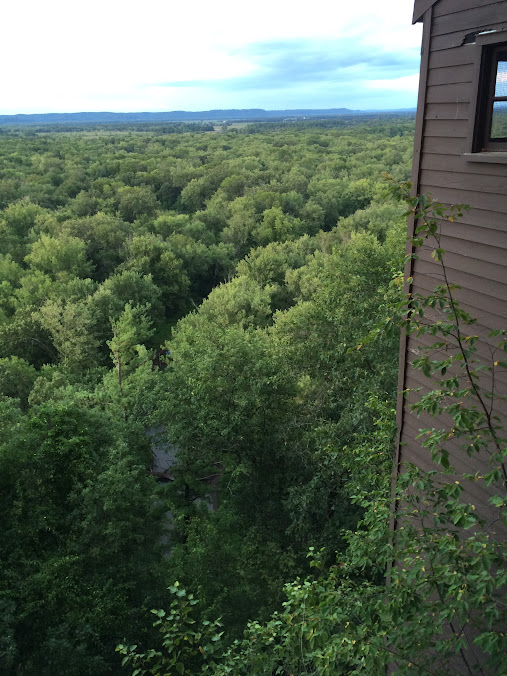 |
| View from the top of the tower. |
 |
| Looking down. |
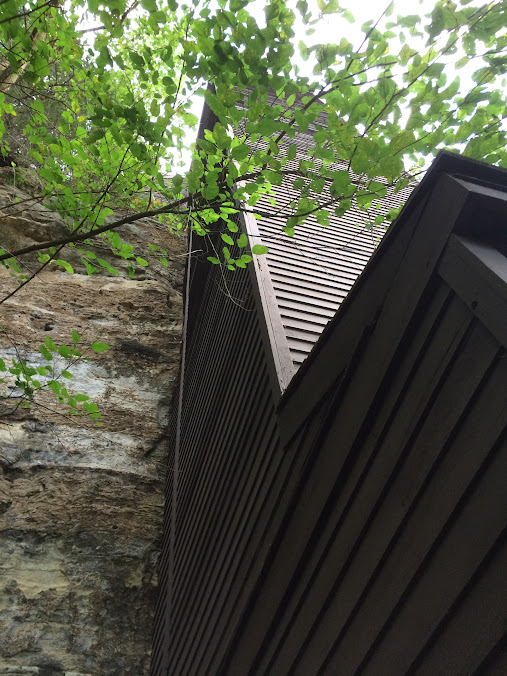 |
| From the bottom looking up. A rock shaft was hollowed out below this point another 120 feet to the tunnel below. |
 |
| Entrance to the tunnel. |
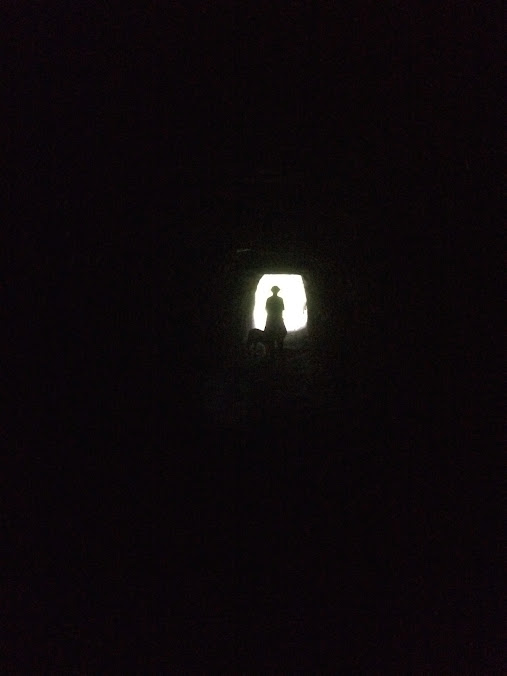 |
| Yes, there have been horror movies filmed here... |
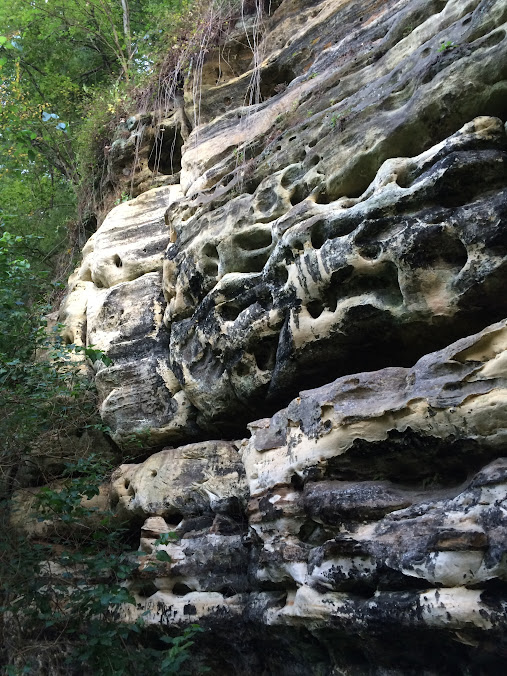 |
| Cliff detail- ancient rock. |
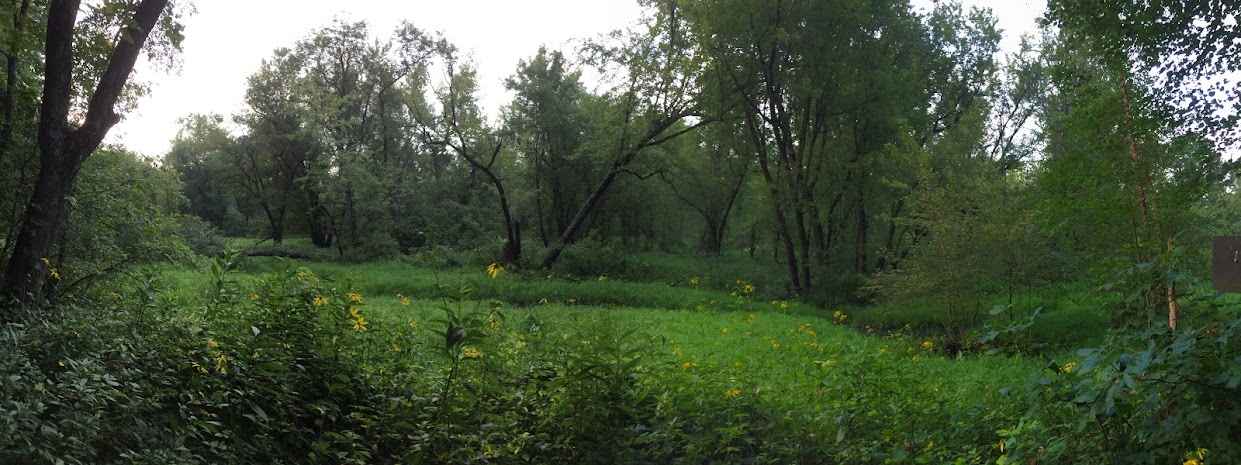 |
| Panorama of the bottomland forest. |
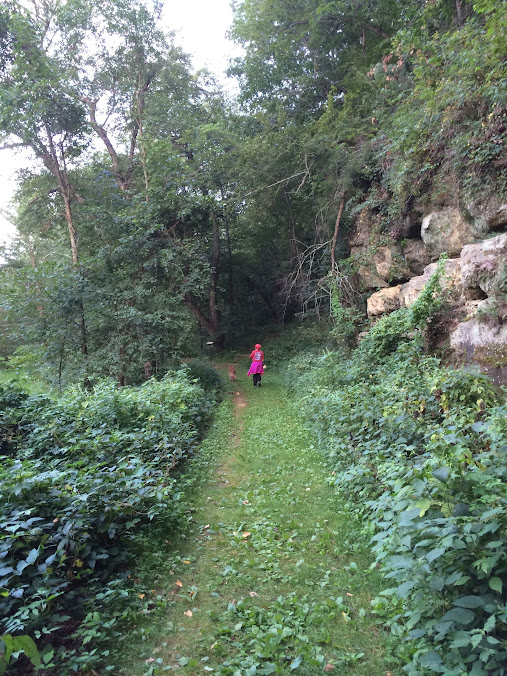 |
| Hiking back from the tunnel entrance. |
We spent a day at the International Crane Foundation, located an hour away from the campground. ICF is dedicated to saving the 15 species of cranes that remain in the world, many of which are endangered or vulnerable to extinction. All species of cranes are on display and informative tours are
conducted several times a day. We learned a lot and enjoyed getting up
close and personal with the cranes.
https://www.savingcranes.org/
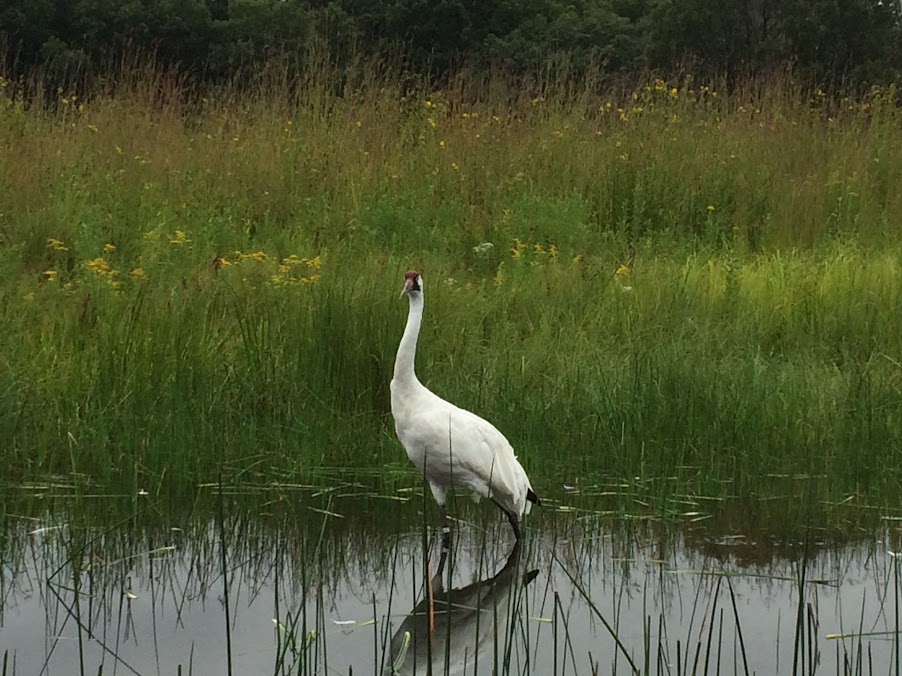 |
| Endangered Whooping Crane |
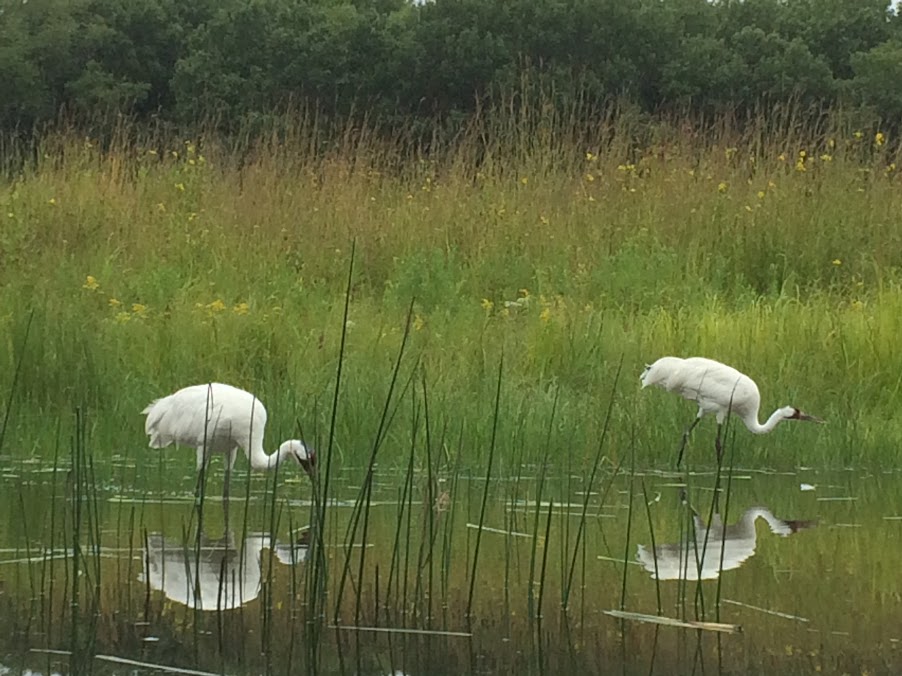 |
| 2 Whoopers |
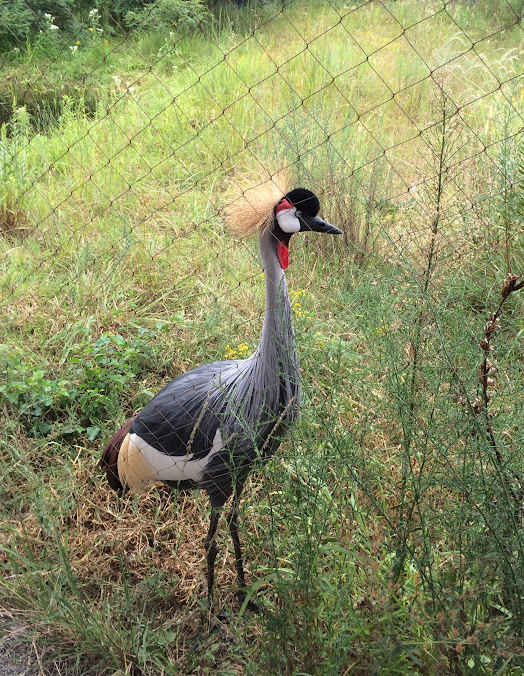 |
| Endangered Grey Crowned Crane- one of the 15 species remaining in the world. All are being conserved and exhibited at the Foundation. |
On the way to see the cranes, we stopped at Natural Bridge State Park. A short hike took us to the natural limestone bridge, namesake of the park and a reminder of the ancient natural history of the area. Testing has indicated human use of the cave below the arch dating from 12,000 years ago.
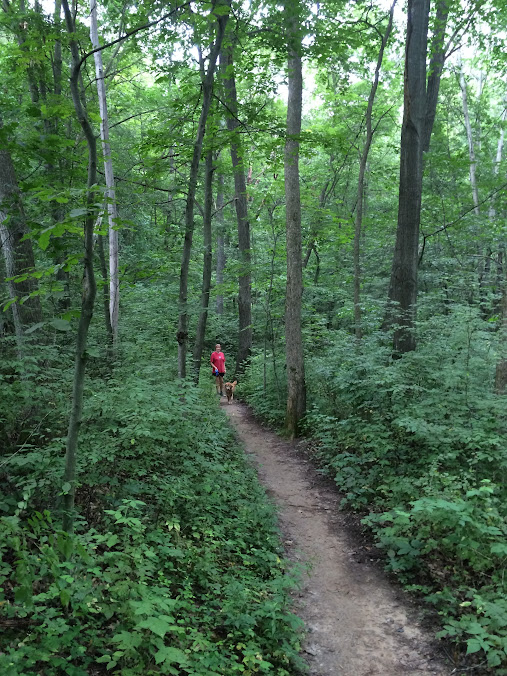 |
| A pleasant walk in the woods. |
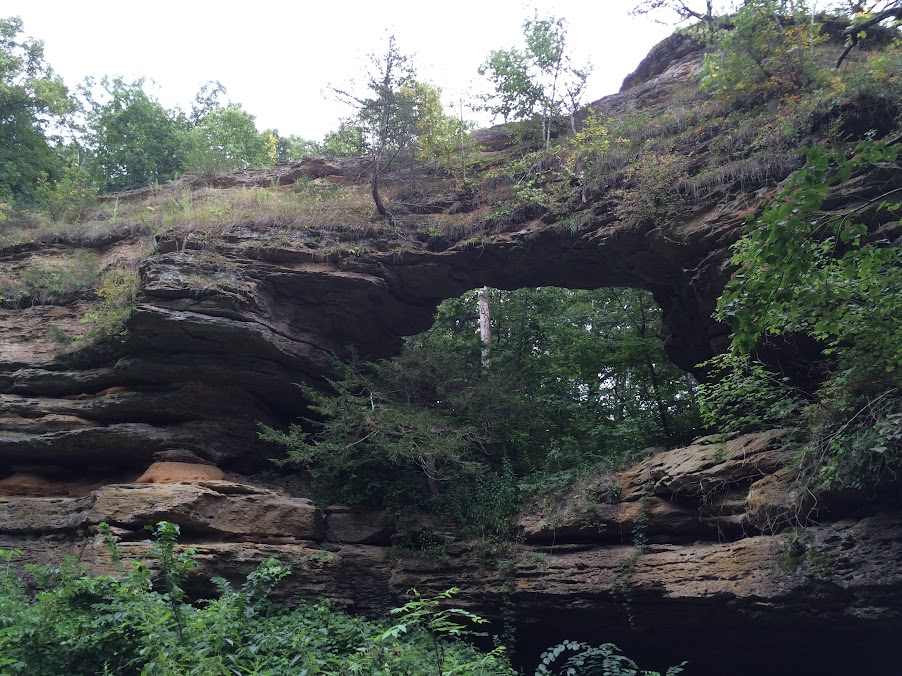 |
| Natural bridge. Testing has indicated human use of the shelter cave below from 12,000 year ago. |
Our next stop was in Sauk County, Wisconsin- notable for being the locale of Aldo Leopold's shack, immortalized in his book Sand County Almanac (there is no Sand County but there is a lot of sand in Sauk County). That book inspired me to undertake a career change from architecture to land conservation at age 40. We took a short hike through the woods of Mirror Lake State Park.
Aldo Leopold's shack will be the subject of a future trip.
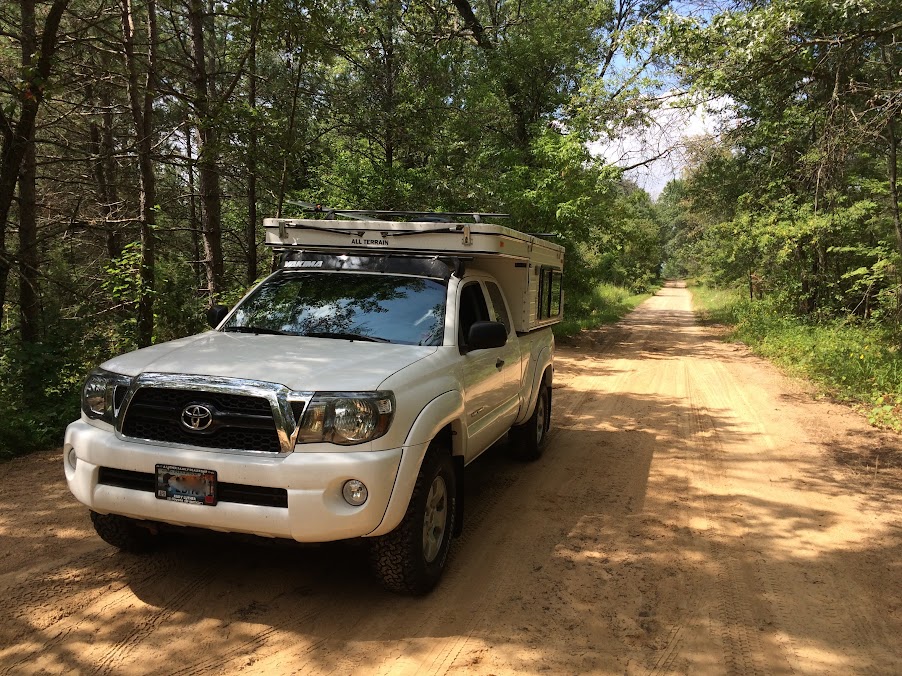 |
| "Sand" County |
 |
| Note the road- pure sand. |
In Mirror Lake State Park, we visited another Frank Lloyd Wright house- the Seth Peterson Cottage. The cottage was designed in 1958, the last Wisconsin building designed by Wright. Construction was not completed before he died in 1959. Located on a ridge overlooking Mirror Lake, the house was eventually acquired by the state of Wisconsin and added to the park. Over the years, the cottage fell into disrepair. A group of local residents organized a nonprofit to restore the house faithfully to Wright's design and manage it under lease from the state. The cottage was the first Wright house to be available for overnight occupancy and remains one of the few that are today. The money received from guests pays for upkeep of the cottage.
http://www.sethpeterson.org/
 |
| The entrance to the Seth Peterson Cottage. |
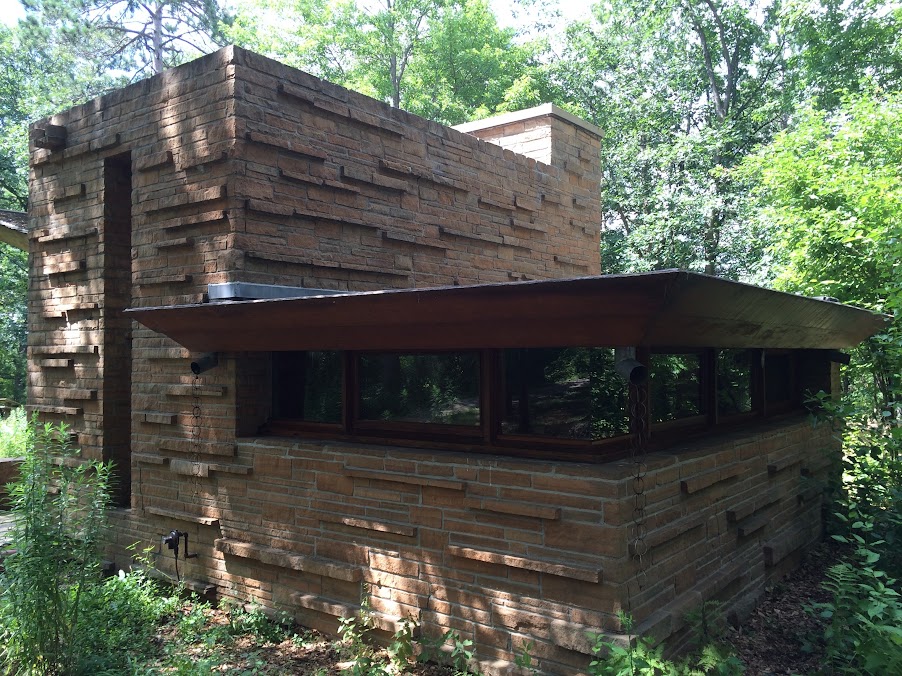 |
| The bedroom wing. |
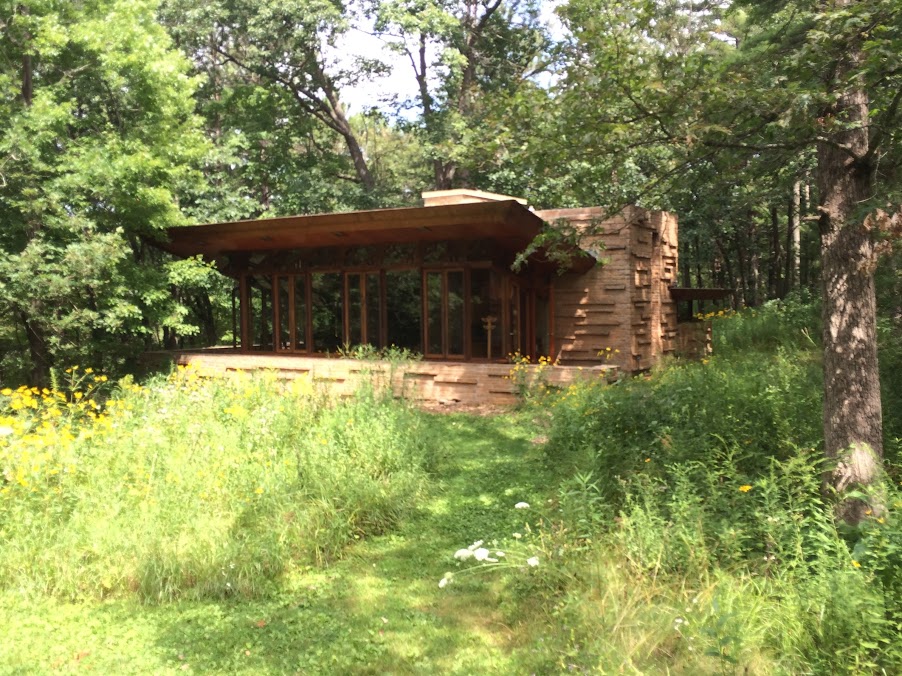 |
| The living room wall- all glass to the outdoors. |
All journeys must eventually end. It was time to head back to Minnesota. We stopped for a picnic lunch at Wildcat Mountain State Park. The park is on a high ridge overlooking the Kickapoo River Valley. We enjoyed a nice view before hitting the road for home.
 |
| Panorama from Wildcat Mountain |
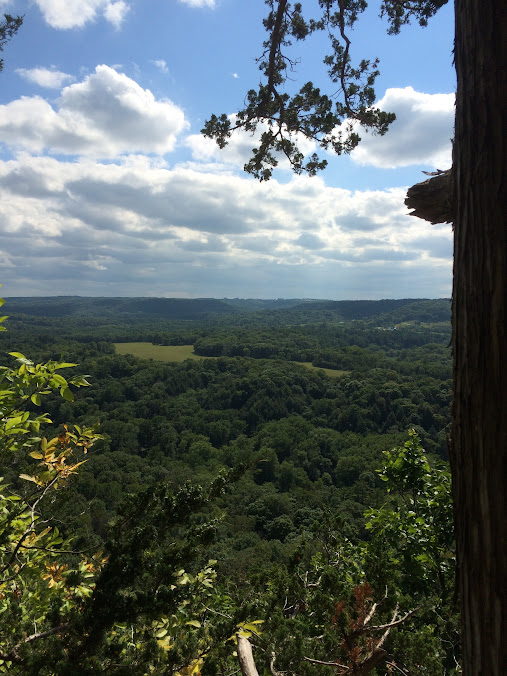 |
| The Driftless Area |
 |
| Driftless Area farm view. |

